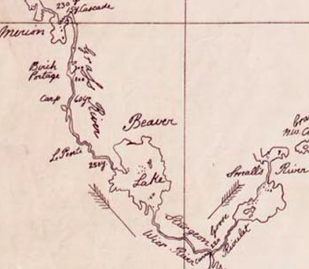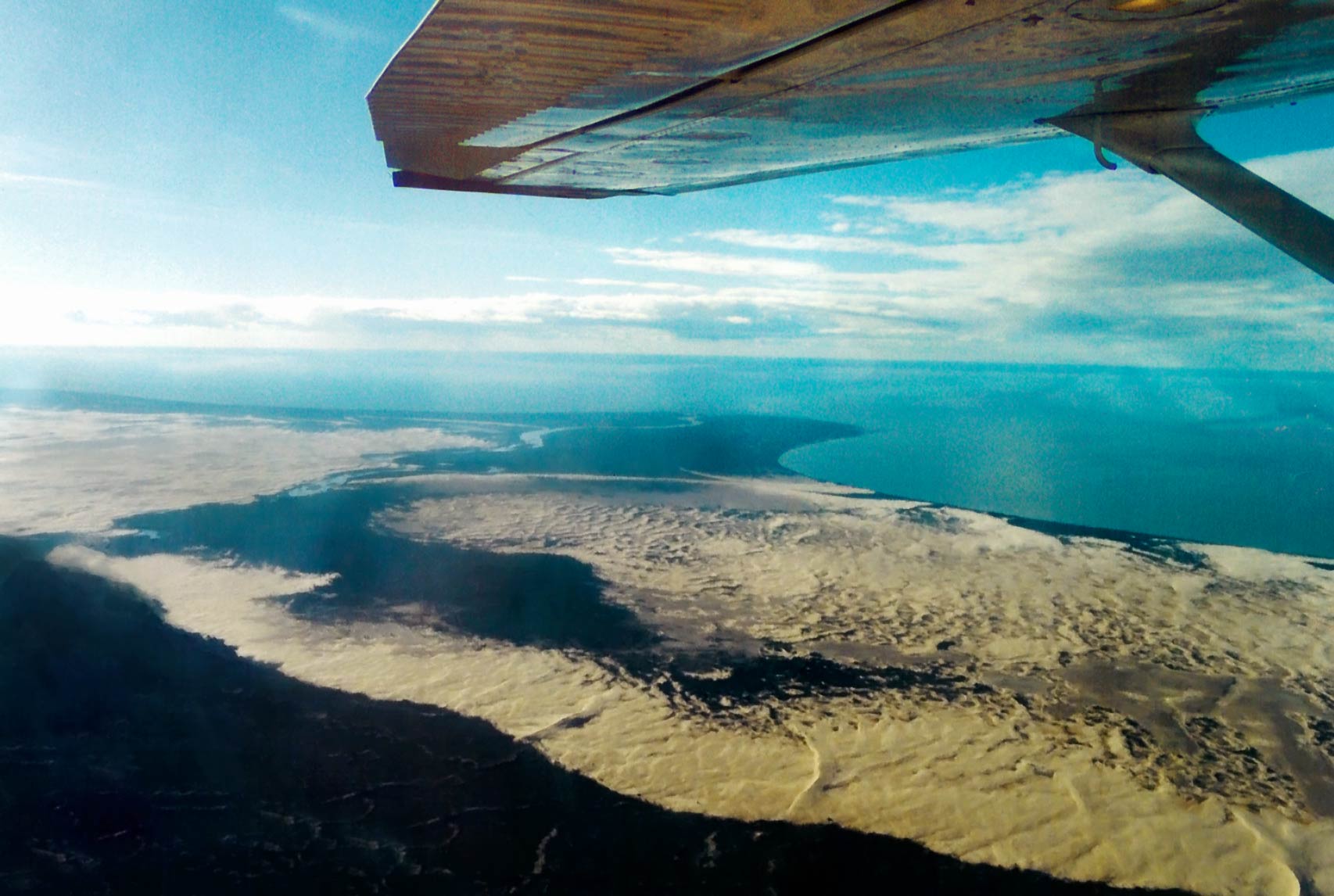|
Granite Lake (Saskatchewan)
Granite Lake is a lake in the Canadian province of Saskatchewan. It is situated in the boreal forest in the Churchill River Upland ecozone of Canada. Granite Lake is along the course of the Wildnest River, which drains the much larger Wildnest Lake west into the Sturgeon-Weir River. The Sturgeon-Weir River is a tributary of the Saskatchewan River. Granite Lake is about west of Creighton. While there is a provincial campground at the lake, there are no communities along its shore. Access is from Highway 106. Granite Lake Recreation Site Granite Lake Recreation Site () is a provincial campground on the southern shore of Granite Lake. The park, which is situated in a "natural forest setting", has six rustic campsites, a boat launch, wildlife viewing opportunities, and a picnic area. The boat launch provides access to the lake for fishing, boating, and other water sports. See also * List of lakes of Saskatchewan * Tourism in Saskatchewan There are numerous heritages an ... [...More Info...] [...Related Items...] OR: [Wikipedia] [Google] [Baidu] |
Northern Saskatchewan Administration District
The Northern Saskatchewan Administration District (NSAD) is the unorganized area of the Canada province of Saskatchewan. Overwhelmingly larger than the province's other communities, it encompasses approximately half of Saskatchewan's landmass, an area comparable to that of New Zealand. Despite its extent, the majority of Saskatchewanians live in the southern half of the province, and the majority of Northern Saskatchewanians live in incorporated municipalities outside the NSAD's jurisdiction. As a result, the 2016 census counted only 1,115 district residents, which placed its population density at 250 square kilometres for every inhabitant. Because of its extremely sparse population, the district has no local government and is directly subject to the Minister of Government Relations. History An unincorporated Northern Saskatchewan region was first established by the 1948 ''Northern Administration Act''. In 2020, travel into the NSAD was restricted as part of the Government of Sa ... [...More Info...] [...Related Items...] OR: [Wikipedia] [Google] [Baidu] |
Canada
Canada is a country in North America. Its ten provinces and three territories extend from the Atlantic Ocean to the Pacific Ocean and northward into the Arctic Ocean, covering over , making it the world's second-largest country by total area. Its southern and western border with the United States, stretching , is the world's longest binational land border. Canada's capital is Ottawa, and its three largest metropolitan areas are Toronto, Montreal, and Vancouver. Indigenous peoples have continuously inhabited what is now Canada for thousands of years. Beginning in the 16th century, British and French expeditions explored and later settled along the Atlantic coast. As a consequence of various armed conflicts, France ceded nearly all of its colonies in North America in 1763. In 1867, with the union of three British North American colonies through Confederation, Canada was formed as a federal dominion of four provinces. This began an accretion of provinces an ... [...More Info...] [...Related Items...] OR: [Wikipedia] [Google] [Baidu] |
Provinces And Territories Of Canada
Within the geographical areas of Canada, the ten provinces and three territories are sub-national administrative divisions under the jurisdiction of the Canadian Constitution. In the 1867 Canadian Confederation, three provinces of British North America—New Brunswick, Nova Scotia, and the Province of Canada (which upon Confederation was divided into Ontario and Quebec)—united to form a federation, becoming a fully independent country over the next century. Over its history, Canada's international borders have changed several times as it has added territories and provinces, making it the world's second-largest country by area. The major difference between a Canadian province and a territory is that provinces receive their power and authority from the ''Constitution Act, 1867'' (formerly called the ''British North America Act, 1867''), whereas territorial governments are creatures of statute with powers delegated to them by the Parliament of Canada. The powers flowing from t ... [...More Info...] [...Related Items...] OR: [Wikipedia] [Google] [Baidu] |
Saskatchewan
Saskatchewan ( ; ) is a Provinces and territories of Canada, province in Western Canada, western Canada, bordered on the west by Alberta, on the north by the Northwest Territories, on the east by Manitoba, to the northeast by Nunavut, and on the south by the United States, U.S. states of Montana and North Dakota. Saskatchewan and Alberta are the only landlocked provinces of Canada. In 2022, Saskatchewan's population was estimated at 1,205,119. Nearly 10% of Saskatchewan’s total area of is fresh water, mostly rivers, reservoirs and List of lakes in Saskatchewan, lakes. Residents primarily live in the southern prairie half of the province, while the northern half is mostly forested and sparsely populated. Roughly half live in the province's largest city Saskatoon or the provincial capital Regina, Saskatchewan, Regina. Other notable cities include Prince Albert, Saskatchewan, Prince Albert, Moose Jaw, Yorkton, Swift Current, North Battleford, Melfort, Saskatchewan, Melfort, and ... [...More Info...] [...Related Items...] OR: [Wikipedia] [Google] [Baidu] |
Boreal Forest Of Canada
Boreal may refer to: Climatology and geography *Boreal (age), the first climatic phase of the Blytt-Sernander sequence of northern Europe, during the Holocene epoch *Boreal climate, a climate characterized by long winters and short, cool to mild summers *Boreal ecosystem, an ecosystem with a subarctic climate in the Northern Hemisphere *Boreal forest, a biome characterized by coniferous forests *Boreal Sea, a Mesozoic-era seaway Companies and organizations * Boreale, a Quebec microbrewery *Boreal Mountain Resort, a ski resort in the Lake Tahoe area of California * Boreal Norge, a Norwegian public transport operator *Collège Boréal, a francophone college in Ontario, Canada Other uses * Boreal (horse), a racehorse * Carlo Boreal, a fictional character in Philip Pullman's ''His Dark Materials'' trilogy *''Le Boreal'', a French cruise ship * Borealism, the exoticisation of the northern regions of the Earth and their cultures See also *Boreal forest of Canada, a region covering muc ... [...More Info...] [...Related Items...] OR: [Wikipedia] [Google] [Baidu] |
Boreal Shield Ecozone (CEC)
The Boreal Shield Ecozone, as defined by the Commission for Environmental Cooperation (CEC), is the largest ecozone in Canada. Covering 1.8 million square kilometres it covers almost 20% of Canada's landmass, stretching from northern Saskatchewan to Newfoundland. Geography Landforms The retreat of the Laurentide Ice Sheet left a landscape of broadly rolling uplands and lowlands with precambrian granitic bedrock outcrops. Few clear drainage channels were left in the rocky sediments deposited by the glacier resulting in a deranged drainage pattern. The numerous wetlands and lakes formed give this ecozone a unique character. Water features in this ecozone contain 22% of Canada's freshwater surface area. Soils Soil types vary widely across the region in response to the wide range of climate and soil components present. Cryosols are found in the most northerly areas wherever there is permafrost. Accumulation of organic matter, particularly peat, results in organic soils in much of ... [...More Info...] [...Related Items...] OR: [Wikipedia] [Google] [Baidu] |
Sturgeon-Weir River
The Sturgeon-Weir River is a river in east-central Saskatchewan, Canada. It flows about south-southeast to join the Saskatchewan River at Cumberland House, Saskatchewan. It was on the main voyageur route from eastern Canada northeast to the Mackenzie River basin. The river is a popular wilderness canoe route in Canada. Description The river's source is Corneille Lake, near the community of Pelican Narrows. It travels southeast, crossing Saskatchewan Highway 106 before reaching Amisk Lake. It then continues southeasterly to Sturgeon Landing and Namew Lake. It runs through the Churchill River Uplands ecoregion which is located along the southern edge of the Precambrian Shield. The area contains continuous coniferous and boreal forest, consisting of closed stands of black spruce and jack pine and a ground cover of mosses and lichens. Local relief rarely exceeds 25 m, but there are ridged steeply sloping rocky uplands and lowlands with exposed bedrock throughout. Wildlife incl ... [...More Info...] [...Related Items...] OR: [Wikipedia] [Google] [Baidu] |
Saskatchewan River
The Saskatchewan River (Cree: ''kisiskāciwani-sīpiy'', "swift flowing river") is a major river in Canada. It stretches about from where it is formed by the joining together of the North Saskatchewan and South Saskatchewan Rivers to Lake Winnipeg. It flows roughly eastward across Saskatchewan and Manitoba to empty into Lake Winnipeg. Through its tributaries the North Saskatchewan and South Saskatchewan, its watershed encompasses much of the prairie regions of Canada, stretching westward to the Rocky Mountains in Alberta and north-western Montana in the United States. Including its tributaries, it reaches to its farthest headwaters on the Bow River, a tributary of the South Saskatchewan in Alberta. Description It is formed in central Saskatchewan, approximately east of Prince Albert, by the confluence of its two major branches, the North Saskatchewan and the South Saskatchewan, at the Saskatchewan River Forks. Both source rivers originate from glaciers in the Alberta Ro ... [...More Info...] [...Related Items...] OR: [Wikipedia] [Google] [Baidu] |
Creighton, Saskatchewan
Creighton is a northern town in the Canadian province of Saskatchewan, named after Thomas Creighton (prospector), Thomas Creighton. It had a 2016 census population of 1,402 inhabitants, down 0.3% from 1,498 inhabitants in 2011. This town lies beside the Saskatchewan-Manitoba border, adjacent to Flin Flon, Manitoba and Flin Flon, Saskatchewan. Due to the proximity between these two communities, there is a high level of cross-border service sharing. One of the most frequently accessed services of Flin Flon is the Flin Flon General Hospital Ambulance Service. Due to the small population of Creighton, the Government of Saskatchewan permits its residents in Creighton, Denare Beach, Saskatchewan, Denare Beach, Sandy Bay, Saskatchewan, Sandy Bay, and Pelican Narrows, Saskatchewan, Pelican Narrows to use the basic and emergency medical services of Flin Flon. The nearest Saskatchewan medical centre is in Prince Albert, Saskatchewan, Prince Albert, 400 kilometers southwest of Creighton. In ... [...More Info...] [...Related Items...] OR: [Wikipedia] [Google] [Baidu] |
List Of Protected Areas Of Saskatchewan
This is a list of protected areas of Saskatchewan. National parks Provincial parks The Government of Canada, federal government transferred control of natural resources to the Western Canada, western provinces in 1930 with the Natural Resources Acts. At that time, the Saskatchewan government set up its own Department of Natural Resources. In an attempt to get people working and to encourage tourism during the Great Depression, several projects were set up by the government, including setting up a provincial park system in 1931. The founding parks include Cypress Hills, Duck Mountain, Good Spirit Lake, Moose Mountain, Katepwa Point, and Little Manitou Lake#Manitou and District Regional Park, Little Manitou. Greenwater Lake was added in 1932. Two more parks were added by the end of the 1930s and Little Manitou ceased to be a provincial park in 1956 and in 1962, it became a regional park. The list of parks, and their types, come from The Parks Act. Regional park ... [...More Info...] [...Related Items...] OR: [Wikipedia] [Google] [Baidu] |
Saskatchewan Highway 106
Highway 106, the Hanson Lake Road, is a fully paved provincial highway, with no cell service the entire way, in the Canadian province of Saskatchewan. It runs from Highway 55 near Smeaton to Highway 167 in Creighton. Highway 106 is about long. The speed limit is . Highway 106 also connects with Highway 691, Highway 692, Highway 928, Highway 120, Highway 912, Highway 913, Highway 932, Highway 933, Highway 165, Highway 911, Highway 135. Many provincial recreation sites are directly accessible from Highway 106, including the large Narrow Hills Provincial Park Narrow Hills Provincial Park is a northern boreal forest provincial recreational park in the Canadian province of Saskatchewan. It is located in a hilly plateau called the Cub Hills and contains several recreational facilities and over 25 a ... and the Hanson Lake Recreation Site. Siberian Outfitters camp is located on north of Highway 55. Highway 106 does not pass through any communities, with the exc ... [...More Info...] [...Related Items...] OR: [Wikipedia] [Google] [Baidu] |


.jpg)
